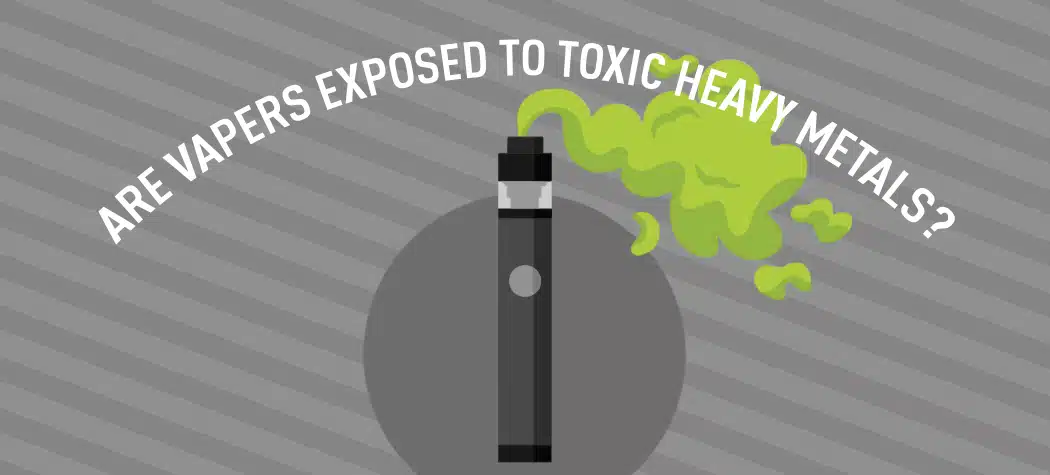Health Studies, Industry Research
Are Vapers Exposed To Toxic Heavy Metals?
A comprehensive critical review of published research looking at the exposure of vapers to toxic heavy metals has been conducted by leading vape experts Professors Soulet and Sussman. They discovered that researchers almost always adopt poor methods to obtain results and therefore their findings frequently report overestimated exposure levels or results that are irrelevant and bear no relation to real-world electronic cigarette use.
What is heavy metal?
Aside from being a genre of rock music that gripped the United Kingdom in the 1970s, heavy metals are, well, metals that are heavy.
This means dense chemical substances such as mercury, cadmium, arsenic, chromium, and lead.
Should I be worried about heavy metals?
Why yes, this is why people wear steel-toe-capped boots. Heavy metals can hurt.
Also, you do not want to breathe in heavy metals as they are considered toxic or poisonous even at very low concentrations.
Heavy metals cause a range of problems in the body from nerve damage to skin problems and death.
What does the research say about heavy metals in e-cig vapour?
The Johns Hopkins Bloomberg School of Public Health receives a lot of money from an anti-vaping billionaire. In 2018 researchers claimed to have found lead, chromium, manganese, zinc and nickel in vapour.
This study is built on work they released the previous year and has been used to inform many other pieces of work which replicate the methodology.
Media coverage of heavy metal problems
In 2019, newspapers wrote about the danger of heavy metals found in nicotine products. “Amongst the 39 samples … all exhibited a positive response for lead, cadmium and nickel except three products,” said one piece.
What wasn’t made clear was that none of these was UK e-liquids. They were a combination of tablets, syrups, suspensions and chewing gum aimed at smoking cessation.
Some would say this is awkward.
What do Professors Soulet and Sussman say?
The pair of researchers looked at 36 studies published after 2018 which focused on the detection and quantification of potentially toxic organic by-products in e-cigarette emissions. This work included 12 studies targeting metal content in electronic cigarette emissions.
“We found that all studies reporting high metal levels (e.g., nickel, lead, chromium and manganese) surpassing toxicological markers suffered from serious methodological shortcomings,” the pair stated.
Typically, this comes down to the “puffing protocol” adopted by the researchers in those studies. Invariably they are using machines that apply too much power to the e-cig’s coil, take too long a draw on the vape tank, and take draws too frequently. This means the experiments are recording what happens when wicks get dry and do not replicate what happens when a normal user vapes with their device.
Did they offer any recommendations?
Yes.
Researchers, need to use standard puffing protocols that replicate real-world use. These should vary depending on whether they are investigating direct-to-lung or mouth-to-lung vape tanks.
For vapers, Professors Soulet and Sussman say in their paper that UK e-cig users can vape more safely if they ensure they always have over 50% of their tank full – so to top it up before it becomes half empty – and to vape
